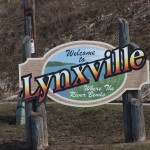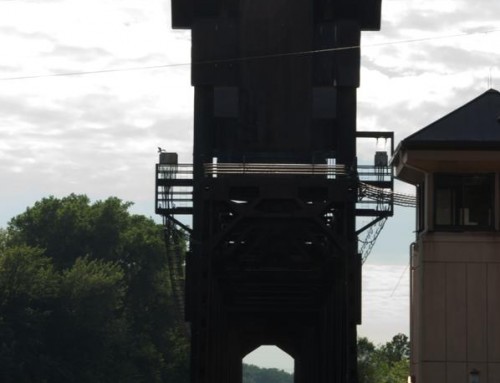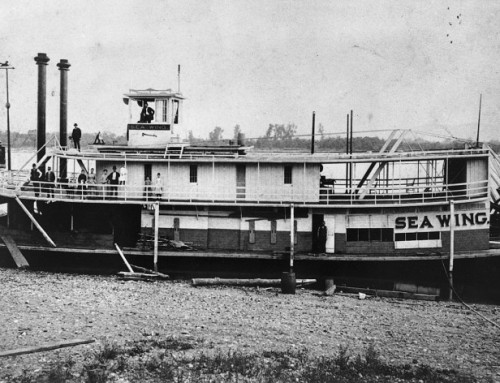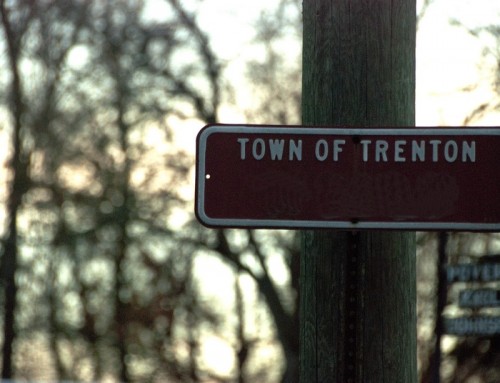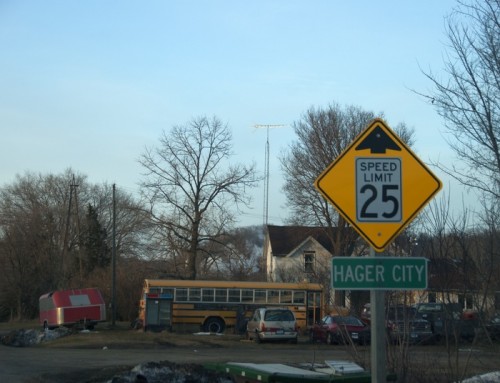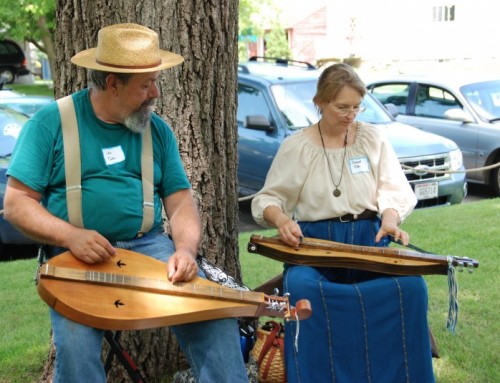Introduction
Commercial fishing was once a big deal around Lynxville; today sport fishers carry on the tradition, just on a smaller scale.
Visitor Information
If you have questions, your best bet is to contact the Lynxville Town Clerk (608.874.4424) during normal business hours.
History
Brothers John and James Haney set up shop here in 1848, building a trading post and a log cabin, thus giving the future town of Lynxville its first name: Haney’s Landing. When the village was laid out in 1857, the surveyors chose the name Lynxville, because they had just arrived on a steamboat that was called the Lynx. Not a very sexy beginning.
For most of its existence, Lynxville’s economy was heavily dependent upon the Mississippi River. The town had a good harbor at a spot in the river called Devil’s Elbow, so the big boats traveling between St. Louis and St. Paul made regular stops. Commercial fishing was the main industry for many years, with huge yields of fish shipped to places as far as New York City. In December 1873 the Johnson brothers harvested 80,000 pounds of fish in a single day by drawing a seine under the frozen Mississippi River. They shipped the headless fish by rail to Dubuque where it was weighed because someone thought the car exceeded the 20,000-pound limit. The car weighed in at 43,000 pounds and only contained half the catch.
One of the largest log rafts ever on the Mississippi was assembled at Lynxville in 1896. The raft was 270 feet wide and 1550 feet long—it had more than two million board feet of lumber or enough to build nearly 700 three-bedroom ranch houses. In the winter, Lynxville residents harvested ice from the river. It was stored in sawdust and sold in summer. When Lynxville was incorporated in 1889, it counted 313 residents. The railroad reached town in 1895 and folks did a nice business shipping wheat, livestock, and apples to regional and national markets.
Exploring the Area
Just south of town, you can watch boats lock through at Lock and Dam #9 (608.874.4311), which opened in 1937 and went through a ten-year overhaul that was finished in 2006.
Hey, what’s that? The three shepherds (10–16 feet tall) and a cross on the side of the bluff at the north end of town were put in place in 1960 by Henry Cooper, a local barber in Lynxville, who spearheaded a community effort to build a religious monument on the bluff. The shepherds are lit from Thanksgiving to New Year’s, while the cross is lit during Lent.
Getting on the River
Hubbard’s Fishing Float (608.732.1084) is just below Lock and Dam #9. To get there, head to the boat ramp across from the Falling Rock Inn and raise the flag; a boat will come get you.
**Looking for more places to visit along the Mississippi River? Check out Road Tripping Along the Great River Road, Vol. 1. Click the link above for more. Disclosure: This website may be compensated for linking to other sites or for sales of products we link to.
Where to Sleep
Camping
Mississippi Bend Campground & RV Park (251 Hillside Dr.; 608.412.0483; open April 15–October 15), located in a shady valley on the south end of town, has a few sites for overnight campers, most of them primitive.
Budget
Hoochies II River Road Resort (313 Spring; 608.874.4422) has a motel with nine tiny, basic rooms, perfect for the fisherman passing through town who just wants a place to crash.
Cabins
Mississippi Bend Campground & RV Park (251 Hillside Dr.; 608.412.0483; open April 15–October 15) has a two bedroom, two bath rental cottage that has a full kitchen, screened porch, and many other amenities.
Where to Go Next
Heading upriver? Check out Ferryville.
Heading downriver? Check out Prairie du Chien.
Community-supported writing
If you like the content at the Mississippi Valley Traveler, please consider showing your support by making a one-time contribution or by subscribing through Patreon. Book sales don’t fully cover my costs, and I don’t have deep corporate pockets bankrolling my work. I’m a freelance writer bringing you stories about life along the Mississippi River. I need your help to keep this going. Every dollar you contribute makes it possible for me to continue sharing stories about America’s Greatest River!
©Dean Klinkenberg, 2024, 2021, 2018,2013,2011
